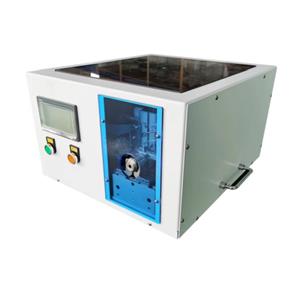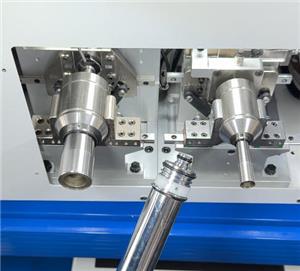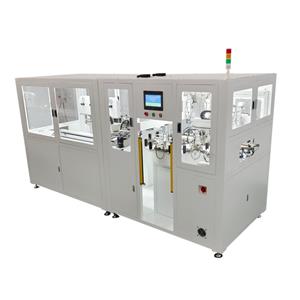Introducing Advanced High-Speed Cable Braiders: Elevating Efficiency and Performance
In the dynamic world of cable manufacturing, the demand for high-quality, durable, and efficient braiding solutions is ever-increasing. To meet these demands, a new generation of high-speed cable braiders has been introduced, offering unparalleled performance and versatility. This news article delves into the features and benefits of two cutting-edge models: the 24-spindle and 36-spindle high-speed cable braiders, both equipped with electronic meter recording devices.
Innovative Design and Enhanced Capabilities
The 24-spindle and 36-spindle high-speed cable braiders represent a significant leap forward in cable braiding technology. Designed with precision and efficiency in mind, these machines are engineered to handle a wide range of braiding materials, including soft copper wire, aluminum-magnesium alloy wire, stainless steel wire, polyester wire, and cotton wire. This versatility ensures that manufacturers can meet diverse customer requirements with ease.
One of the standout features of these braiders is their impressive braiding outer diameter capacity. The 24-spindle model can handle a maximum braiding outer diameter of Φ50mm, while the 36-spindle model can accommodate up to Φ80mm. This makes them suitable for a broad spectrum of applications, from small-diameter cables to larger, more robust ones.
Optimized Spindle Speeds and Production Efficiency
Spindle speed is a critical factor in determining the efficiency and output of a cable braider. The 24-spindle braider boasts a maximum spindle speed of 85RPM, with an optimal speed of 65RPM, enabling it to achieve a maximum production speed of 1050m/h. On the other hand, the 36-spindle braider operates at a maximum speed of 55RPM, with an optimal speed of 40RPM, achieving a production speed of 821m/h. These high speeds ensure that manufacturers can meet tight production deadlines without compromising on quality.
The electronic meter recording device integrated into both models provides real-time monitoring and accurate measurement of production output. This feature not only enhances transparency but also allows for precise tracking of production efficiency, enabling manufacturers to make informed decisions and optimize their processes.
Versatile Braiding Wire Options and Pitch Adjustment
The ability to use different types of braiding wires is crucial for catering to various industry requirements. Both the 24-spindle and 36-spindle braiders support a wide range of wire diameters, from Φ0.35mm to Φ0.12mm, allowing for flexibility in braiding density and pattern. This versatility ensures that manufacturers can produce cables with different levels of durability, flexibility, and conductivity, depending on the application.
Pitch adjustment is another key feature that sets these braiders apart. The 24-spindle model offers a pitch adjustment range of 33-166mm and 48-300mm, while the 36-spindle model provides a range of 20-90mm and 72-360mm. This wide adjustment range enables manufacturers to achieve the desired braiding pattern and density, ensuring that the final product meets the highest quality standards.
Advanced Traction Methods and Host Motor Power
The traction method employed by a cable braider plays a vital role in ensuring smooth and consistent braiding. The 24-spindle braider uses tractor wheel traction or tracked traction, while the 36-spindle braider utilizes a crawler-type traction system combined with mechanical linkage of the weaving machine. These advanced traction methods ensure precise control over the cable movement, resulting in uniform braiding and high-quality finished products.
Power is another crucial aspect of these braiders. Both models are equipped with a 380V 7.5KW host motor, providing ample power to handle demanding braiding tasks. Additionally, the 24-spindle braider features a 380V 5.5KW take-up motor, while the 36-spindle model has a 380V 1.1KW take-up motor. These powerful motors ensure that the braiders can operate continuously and efficiently, even under heavy loads.
Enhanced Control and Specification Details
The host control system of these braiders is based on an AC variable frequency control host, offering precise control over spindle speed and production output. This advanced control system enables operators to adjust the braiding parameters easily, ensuring optimal performance and flexibility.
In terms of specification details, both models come with a wire reel size of 1600mm1200mm, providing ample space for storing and managing braiding wires. The parallel thread roller specification is 100mm135mm (≈6Kg), ensuring smooth and consistent wire feeding during the braiding process.
Conclusion: Elevating Cable Braiding to New Heights
The introduction of the 24-spindle and 36-spindle high-speed cable braiders marks a significant milestone in the cable manufacturing industry. With their advanced features, high production speeds, and versatile capabilities, these machines are set to revolutionize the way cables are braided. Whether it's for telecommunications, automotive, or industrial applications, these braiders offer the reliability, efficiency, and quality that manufacturers need to stay ahead in a competitive market.
By investing in these state-of-the-art braiders, manufacturers can enhance their production efficiency, reduce downtime, and produce cables that meet the highest quality standards. As the demand for high-performance cables continues to grow, these advanced braiders will play a crucial role in meeting the industry's evolving needs.




